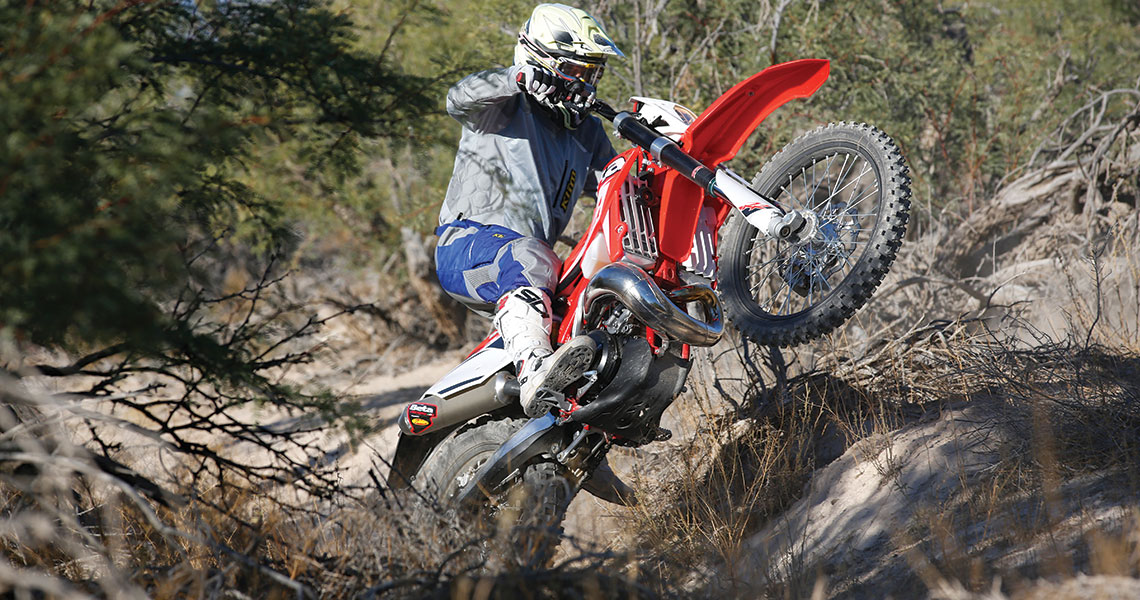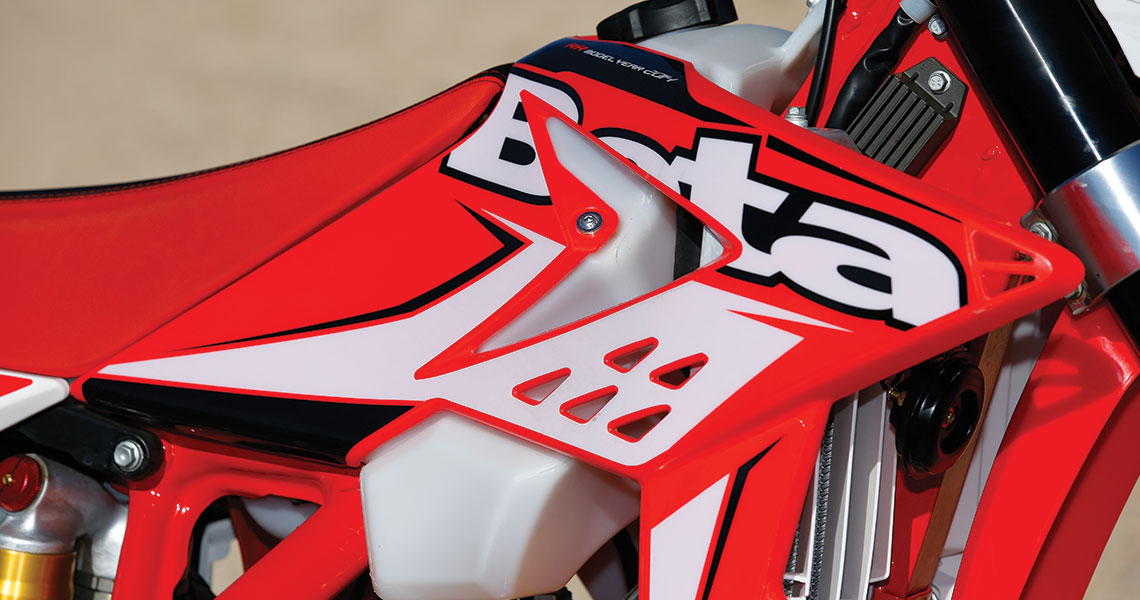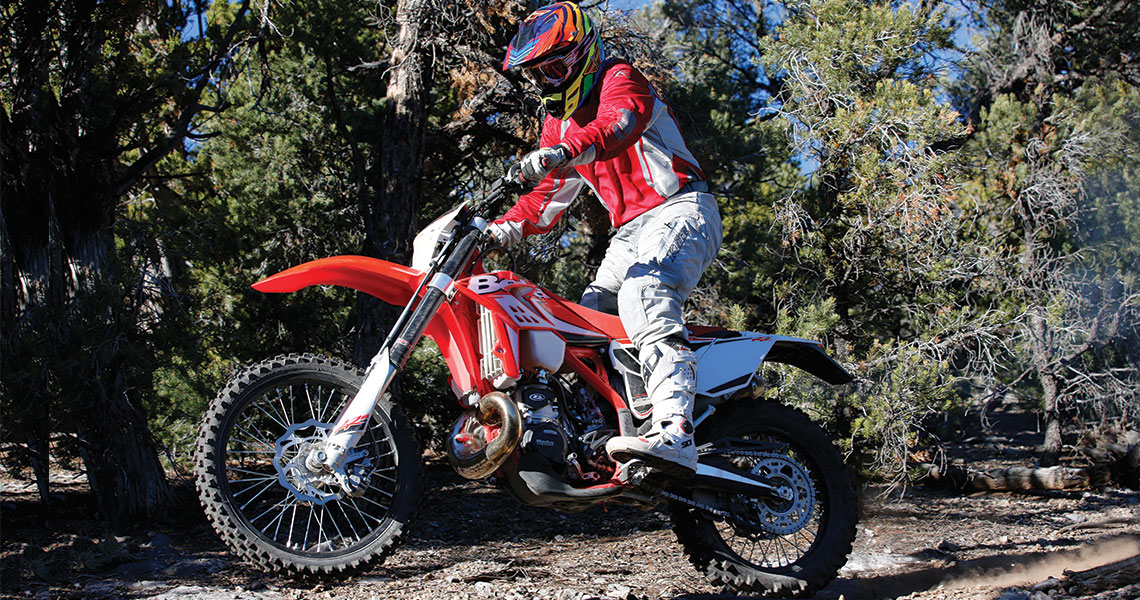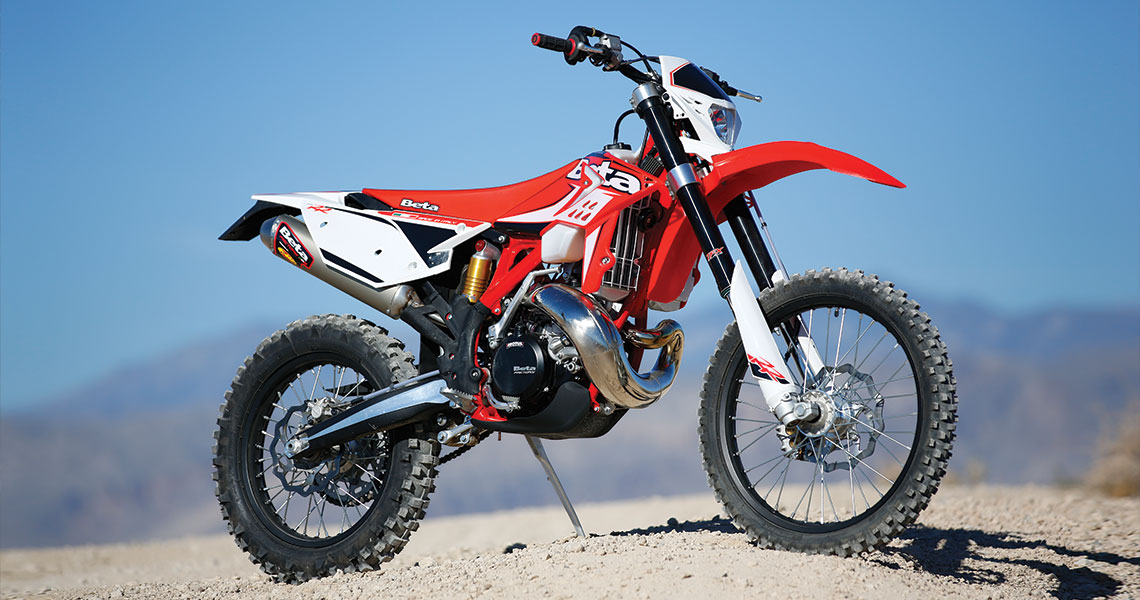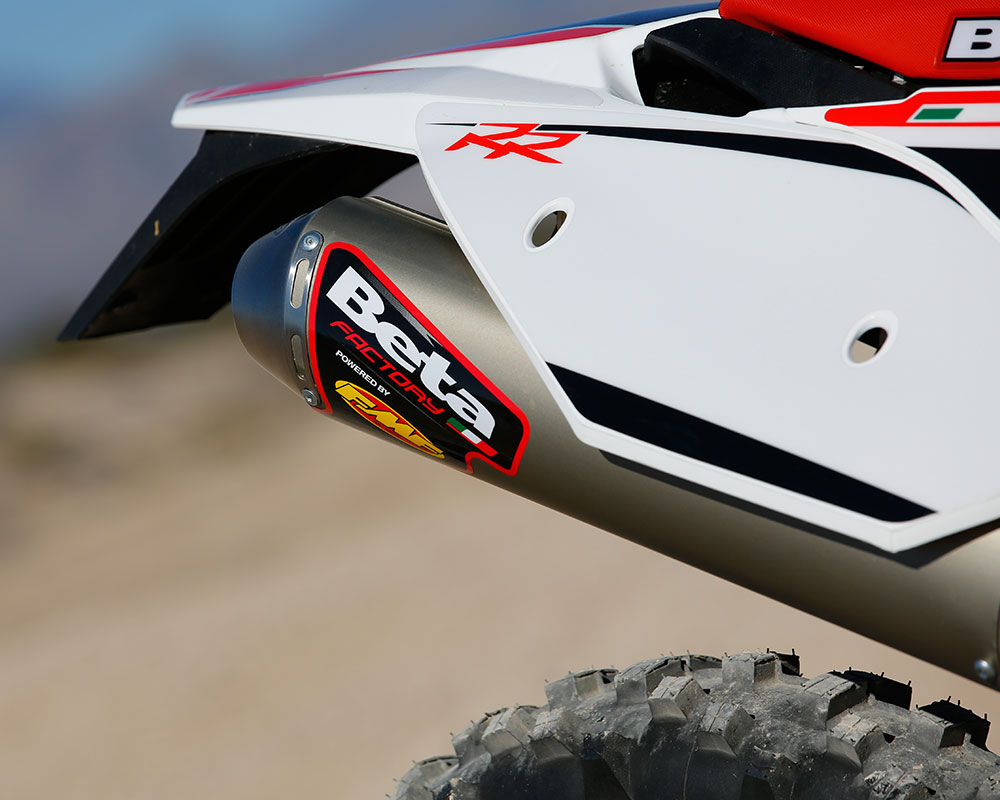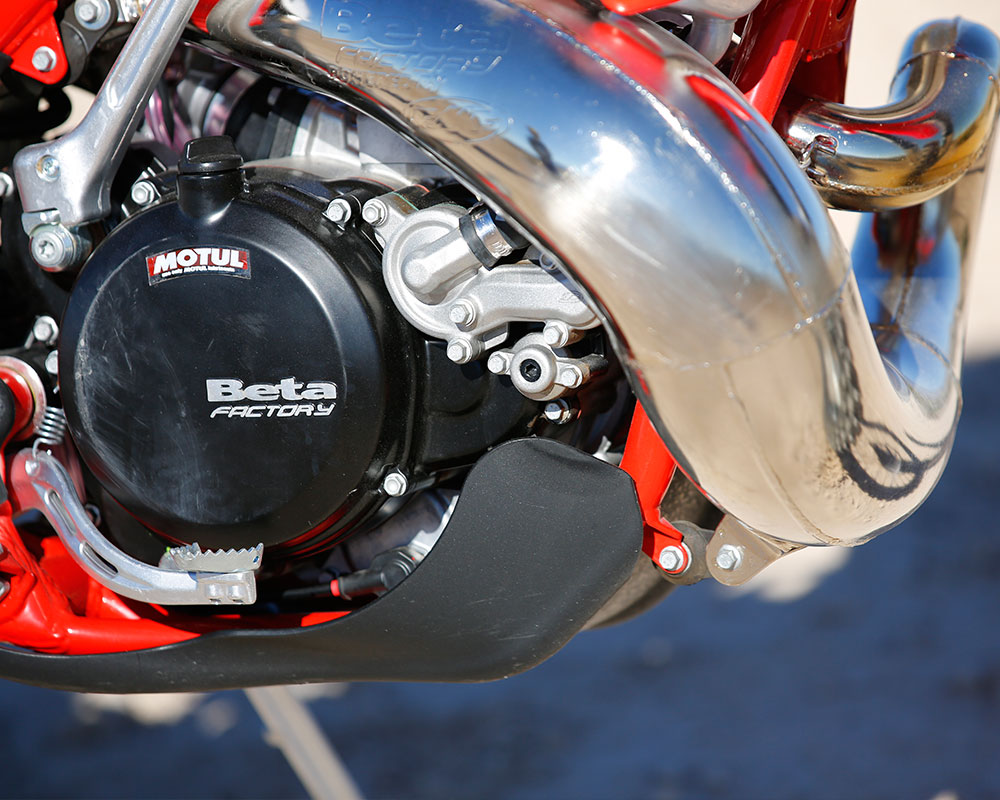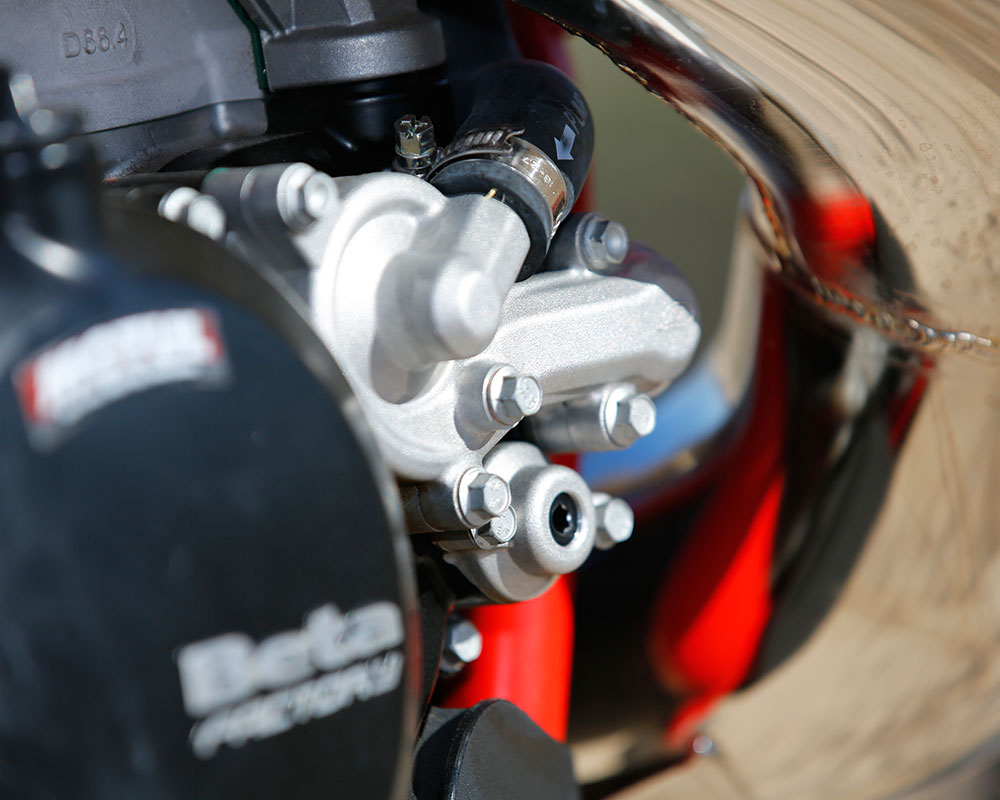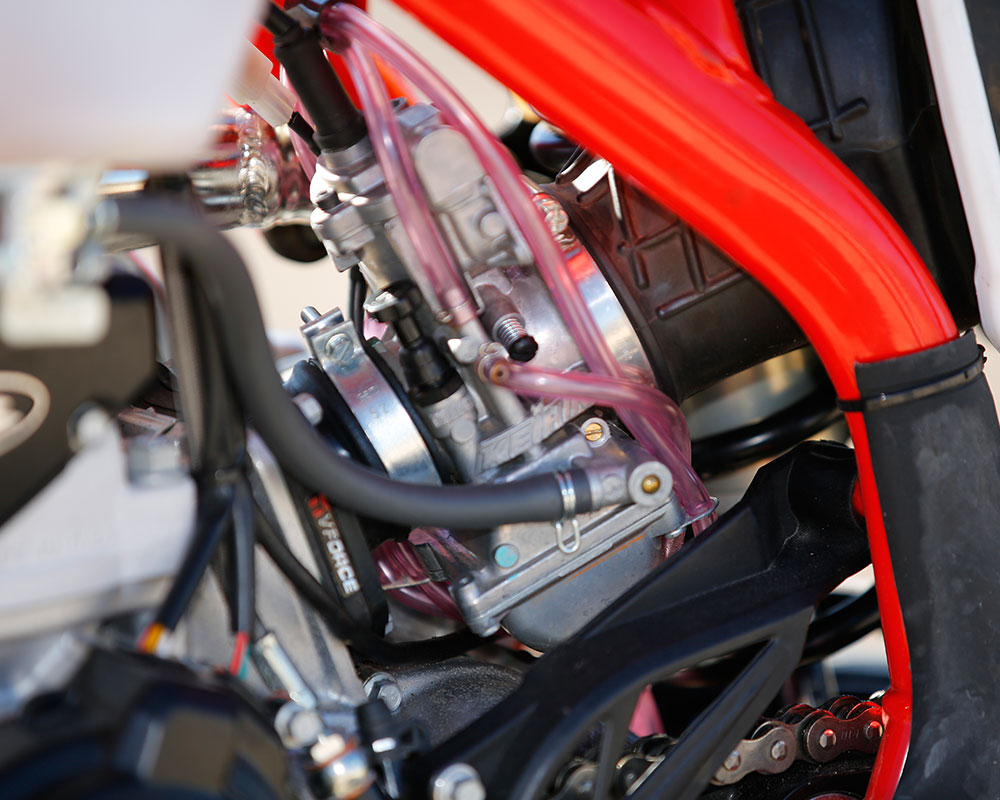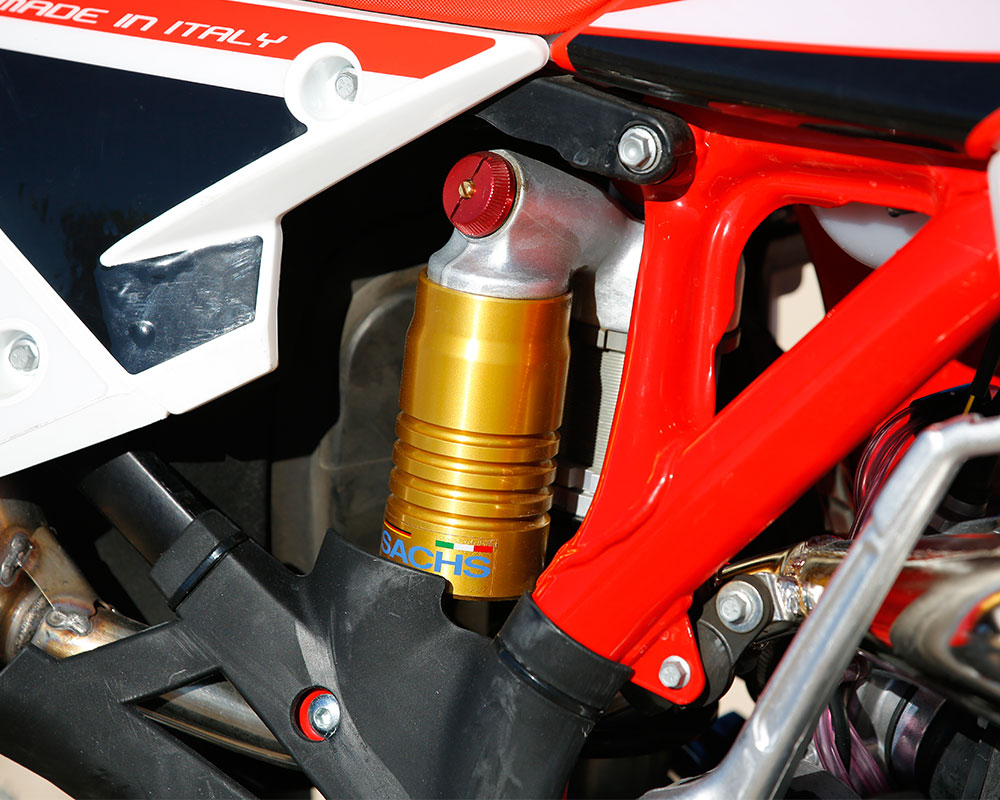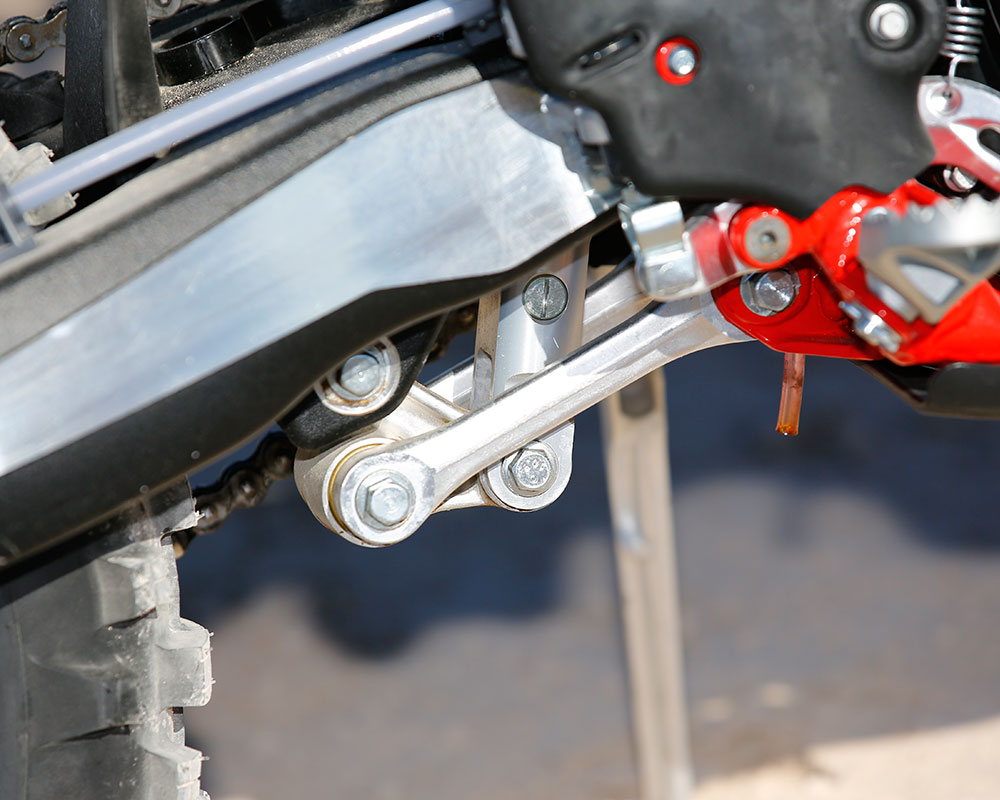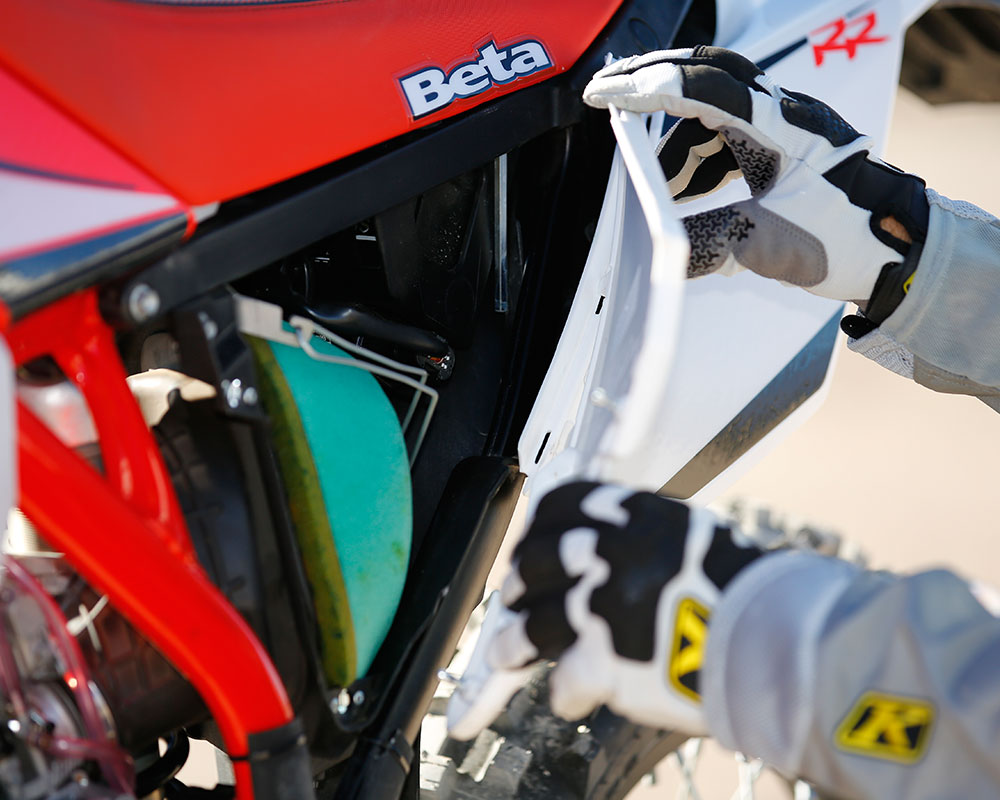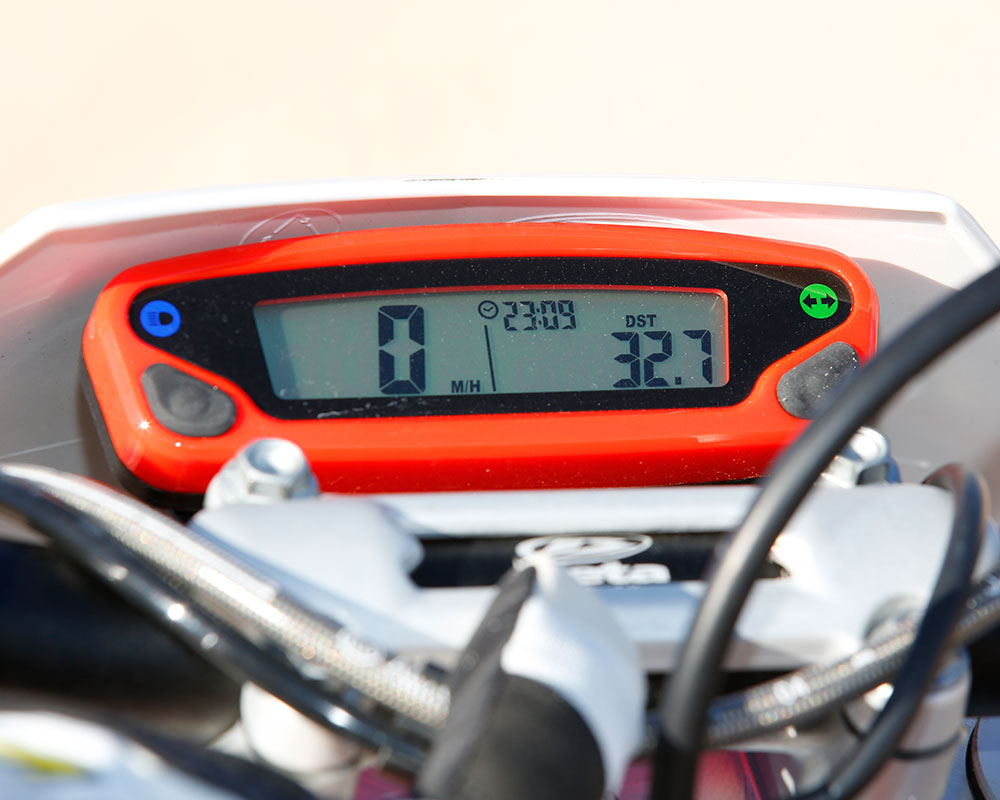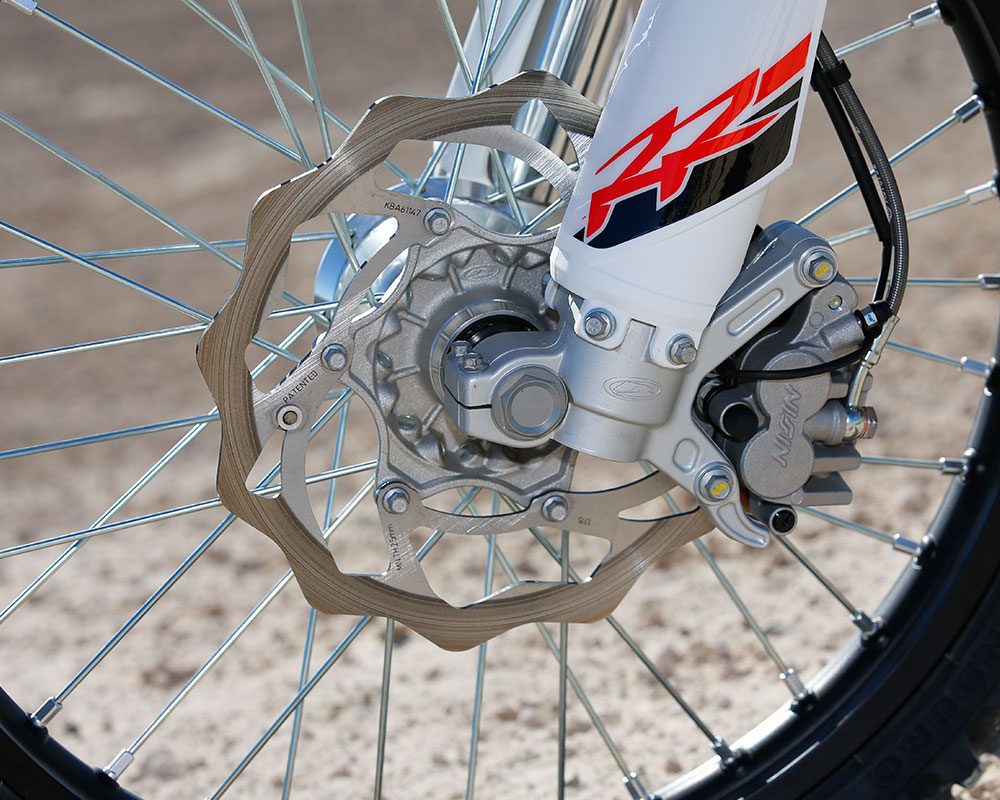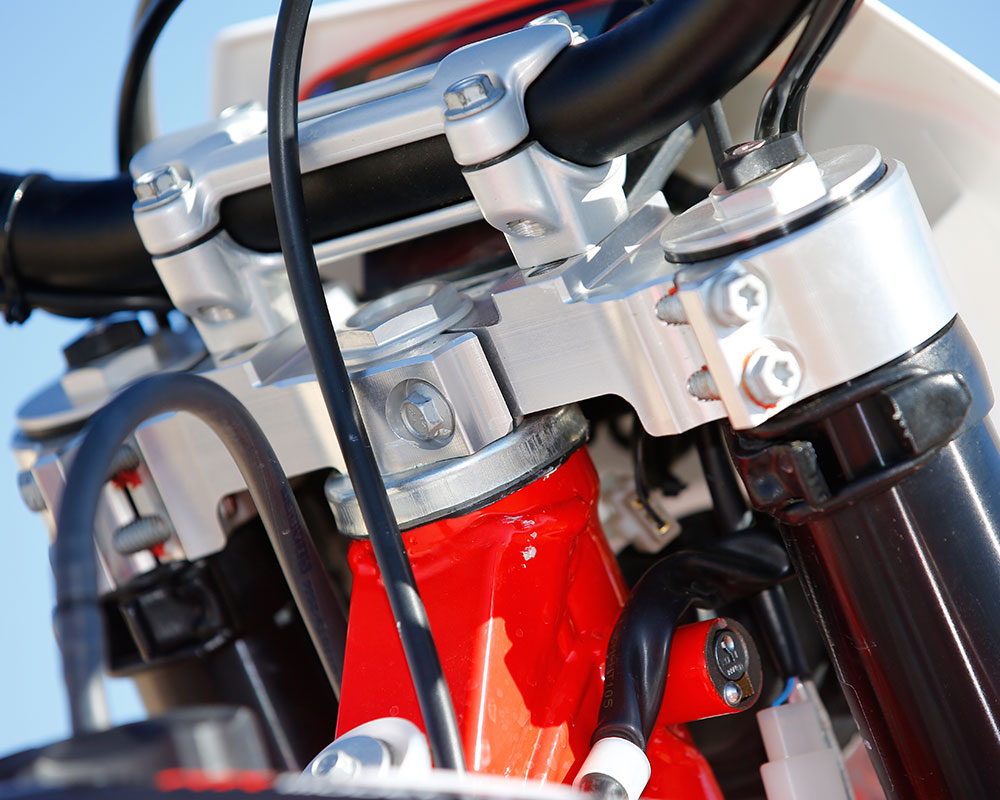2014 Beta 250 RR
A Worthy Alternative
MSRP: $7999
- As different in performance criteria compared to KTMs as it is at being an overall great bike.
- The slightly lower price is a bonus, your are getting a full-featured bike without compromise.
- Power delivery and comfort that will make trail riders happy--and make them better riders too.
- A trail riding setup that isn't too aggressive and certainly isn't too soft.
- Aftermarket is taking notice and makes plenty of Beta parts.
- What is a Beta? You said they've been producing motorcycles for over 100-years?
- No handguards.
- Vibration through the bars can irritate some.
Introduction
It’s an Orange World out on the trails and at the off-road races. Make no mistake about it KTM has done an excellent job of building bikes riders and racers crave. For the most part if you didn’t just buy a KTM you were starting out with a serious disadvantage. Until recently. Beta has been slowly and surely plugging away, in a very calculated and smart way, and is now producing bikes that are a serious contender to the KTMs in everything but outright market share. This is not a bad place to be. For the dirt bike consumer it is great.
Changes
Beta has been producing the two-stroke RR, in 250 and 300cc displacements since 2013. And the engine is all their own. It looks remarkably like a KTM in a lot of ways and it should since the Beta factory was one of KTM’s suppliers in the past, and there had been cooperation between the companies.Early Beta four-strokes came with KTM RFS engines in them and KTM minicycles had Beta engines.
So essentially the bike is all new for most. Upgrades from the 2013 model include upgrades to the 48mm Sachs USD fork and rear shock, centering on better tolerances and improved valving control. Additionally the frame went through extensive computer simulated stress analysis, and changes were made in areas that needed attention. Inside the engine small changes to increase durability and an oil-level check hole was added. On the 250 some changes to the exhaust powervalve mechanism improve the closing action. Overall it was a fine tuning of an all-new package. The big change is to a 2.5-gallon fuel tank, up from 2.0 last year. The front fender is also altered in style and the color makeup, more red, is new for 2014.
Power
- The power is smooth and deceptively fast.
- Traction was more important than snap or hit.
- Electric starting and a six-speed gear box, yes!
The Beta motor has an off-road biased power delivery that differentiates itself from the KTMs in a few distinct ways. Two-strokes have really been pushed by four-stroke performance in the areas of drivability and the length of the pull of power. In other words, how well they hook up and how long you get usable power between shifts.
The 250RR has a fair amount of torque right off idle, but it is deceiving. There seems to be very little flywheel weight or engine inertia to keep the bike spinning, but somehow it is very reluctant to stall or bog down when the throttle is open. The build-up of power is then very smooth and progressive in what would be described as a flat mid-range. There is plenty of power, little fanfare, it just works.
Until you get up in the revs and on the pipe hard, where there is a strong top end pull with a very long over-rev feeling and plenty of pull, even though the bike does not rev really high. It is the kind of motor that does a little of the work for the rider, not having any extra power where it isn’t needed and plenty when it is time. The rider just has to get the throttle open and revs up to get the impressive power levels. Or shift sooner and go faster without making a lot of noise.
Sometimes riders want that feeling without revs, real hit or snap, and the Beta is that bike. It seeks traction and does not need clutch use to control the power at all and being a little sloppy with the throttle isn’t punished. Speaking of the clutch, Beta, as a trial- biased company, has excellent clutch control and feel in the hydraulically activated setup. The six-speeds of the transmission have a semi-wide spread and standard gearing is par for trail riding or trail racing. And when revving there is some vibration from the bike, most noticeable through the handlebar.
The jetting on our test bike was good from 2000-7000 ft. and felt like simple needle position, pilot or main jet changes could dial it in even better for either end for altitude or temperature needs. The crisp low RPM response and pickup was very consistent with Moto Tassinari reed-equipped engines. The electric start worked every time and having a back-up kick-starter is a safeguard.
Suspension
- Don't worry about the name on the components, feel the performance.
- For trail riders and single track racers who aren't AA riders, the Beta is very close.
- If you can feel a one click change on Showa components, the Sachs takes three clicks for the same change.
Just because of the name, Sachs, not being known quite as well as some of the more popular suspension suppliers, the Beta will fight an uphill battle from many critics. But don’t let a name affect the actual performance of the suspension. It is very good. Not having rode a 2013 I cannot say if the improvements were substantial, but there isn’t much to complain about on the RR. Tested as a single-track trail riding or racing bike they are pretty spot on for the majority of riders who’d prefer a compliant ride over a stiffer racing-inspired setup, especially in tighter and more technical terrain.
The bike holds itself up in the stroke and uses the travel in a fairly progressive manner. It does a good job of taking the bump feeling out of the ground but not making it so that you can’t feel what is under the wheels. Sharp hits that usually deflect are absorbed especially well and noticeably better than on most lighter feeling two-strokes, especially in the rear shock. Having a linkage in the rear will put some at ease with the shock performance as well.
In faster, more desert-like conditions or any time you are on a track, the suspension setting is soft by at least a spring rate and some stiffer valving. Here the bike uses all of the stroke and will bottom a little more than preferred. Adding compression helps and the tunability of the Sachs components takes a little more in the amount of clicks to get the desired result when compared to most other suspension components. Use 2-4 clicks for every adjustment to get a noticeable change, especially on the rebound side on both ends and the high-speed compression on the rear shock.
Chassis - Handling
- Light feeling, thin, agile--all the things you expect from a two-stroke.
- The Beta plants its wheels like it is a heavier four-stroke.
- The motor's power delivery compliments, or actually aids the way the bike handles.
The RR is a standout in the handling department. It has a very light feel on its wheels and a light feel through the bars in turning and maneuvering. At the same time the bike acts long, which brings a feeling of stability. It is not overly tall feeling and it for sure is thin and narrow where it needs to be.
So what you get is a bike that craves slow speed tight and technical riding and steers accurately as well as being able to slide and steer by brake sliding the rear. It is a very balanced ride (as long as you have the ride height set properly) that somehow excels at both ends of the handling spectrum, very low speed and very high speed with agility and stability. It also feels very connected to the ground, more like a four-stroke, and then light in the air, as expected for a two-stroke.
In testing in a wide variety of trails and open terrain we were hard pressed to find any faults with the way the bike handled. And all it would take would be some suspension stiffing to make it very potent at going fast across the desert or capable on a track.
The seat has a hard feel but it has enough padding to keep you happy. Moving around on the bike is easy and it is roomy with an adjustable top mount for the handlebar to adjust the rider’s cockpit. The footpegs feel a little farther back than on some bikes, but that may be the key to some of the stable feel as well as how maneuverable the Beta feels when standing on the pegs. The pegs are not low enough or far enough back to really notice it by hitting or touching things, but there is something going on with regards to the handling and it is good.
Working on the bike is simple with tool-less access to remove the air filter and a push-button removal for the seat. The basic simplicity of a two-stroke is obvious and the powervalve isn’t overly complex. You can get at the carb without removing the tank but you have to remove the countershaft sprocket guard. The bike has lights that will get you in after dark and is wisely outfitted with a skidplate. The FMF muffler is not a spark arrestor, though it is quiet and the bike is sold as a closed course competition bike. Fuel range is an easy 40-plus miles with 55 being a high-end with a careful rider.
Conclusion
- The Beta makes no excuses and will go head-to-head with any bike out there.
Beta has entered a very competitive arena dominated by KTM, without making any excuses in doing it. Different by having a 250cc two-stroke off-road bike that splits the difference or spreads out the range between KTM’s XC and XC-W models in setup and intended use. Yes, it is different looking and red rather than orange, but where the Beta is different is in the smoother and longer style of power delivery and a chassis that works hand-in-hand with that power delivery. The 250RR is every bit as good as the KTM and is a viable option for any rider looking to be different.
Locate a Beta Dealer - Click Here
Recent Product Tests
Rider Opinions
Leave a Reply
